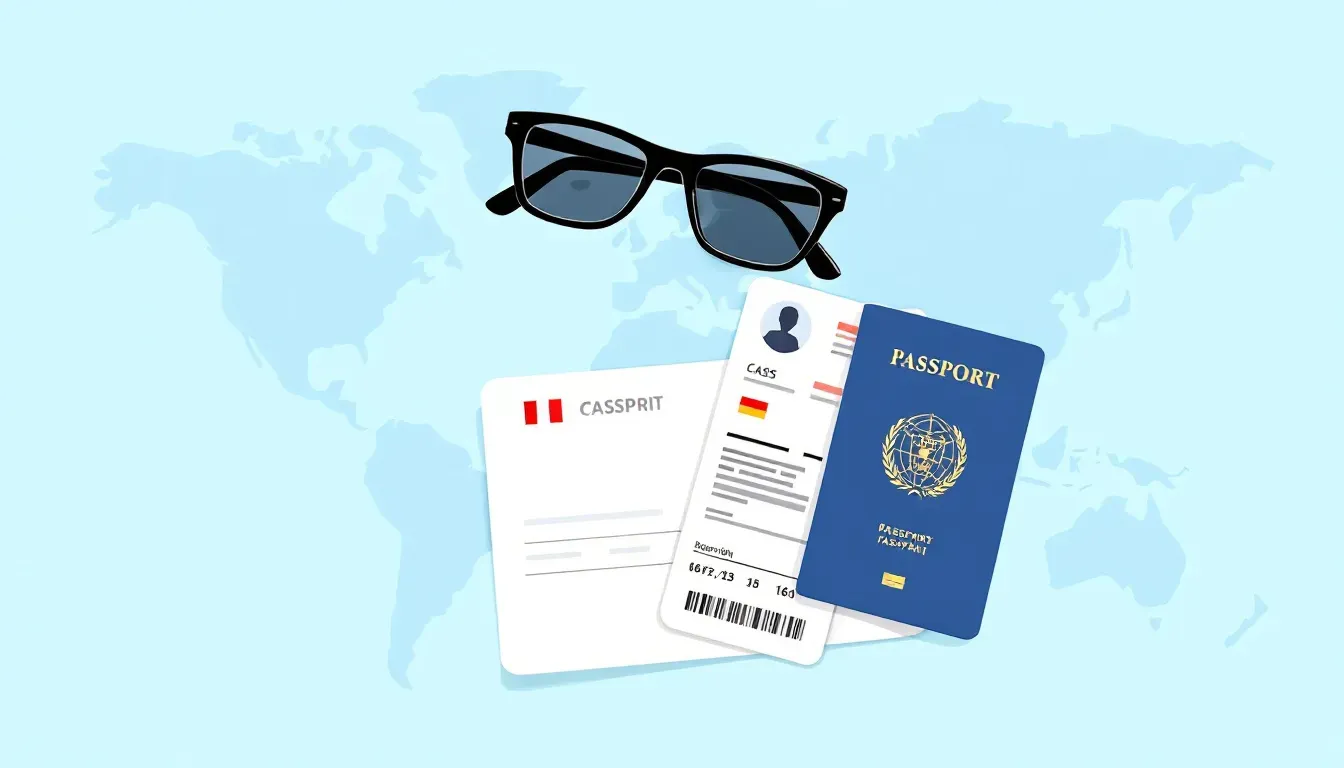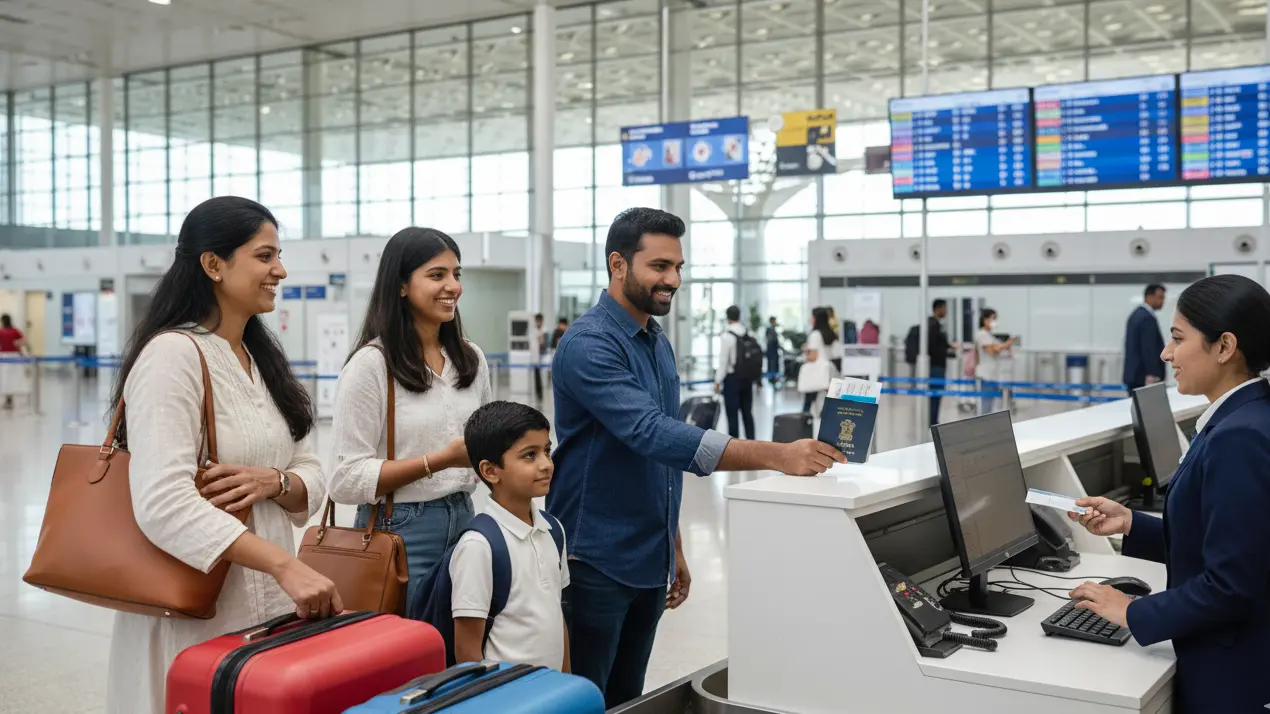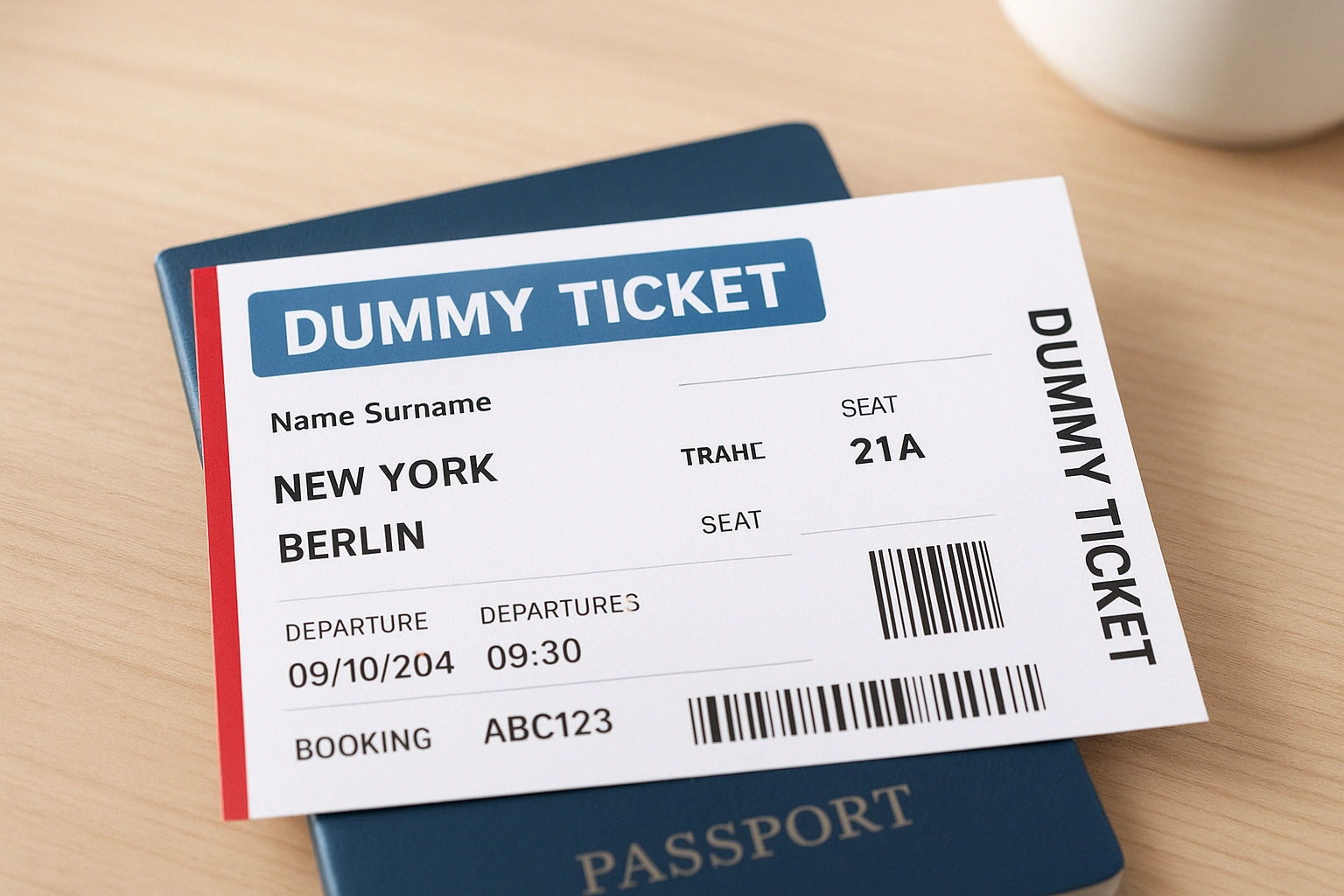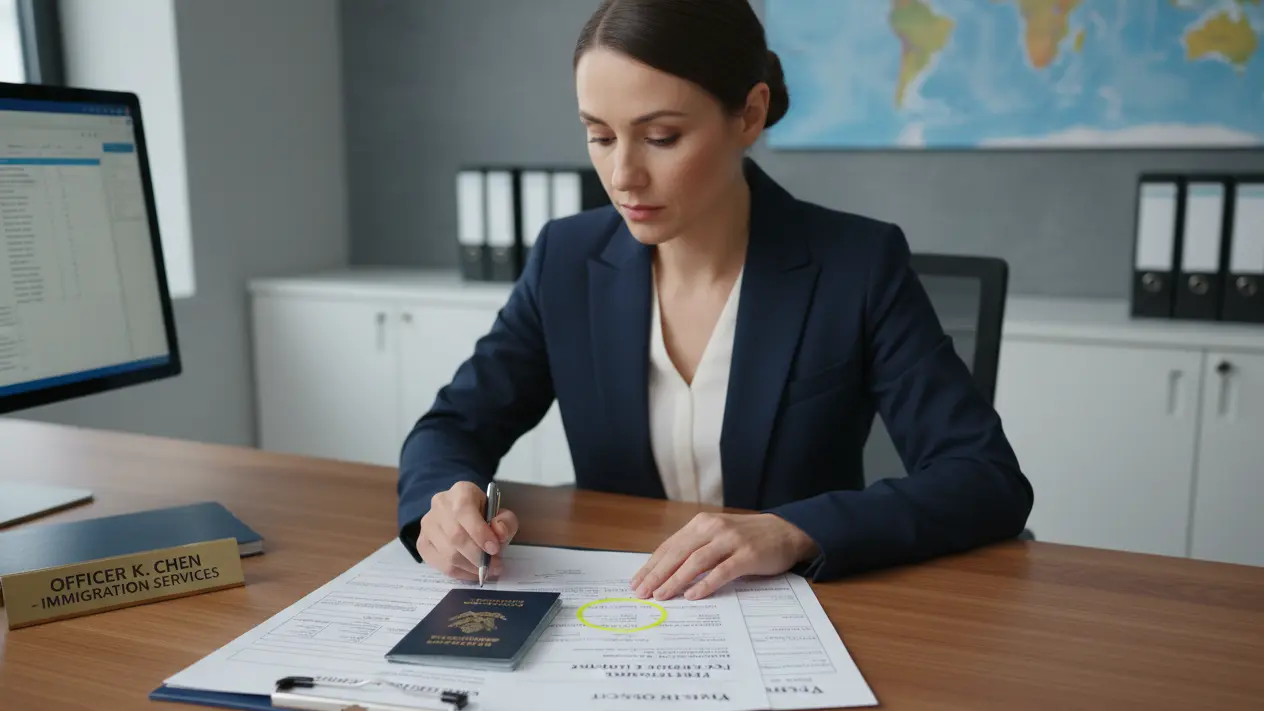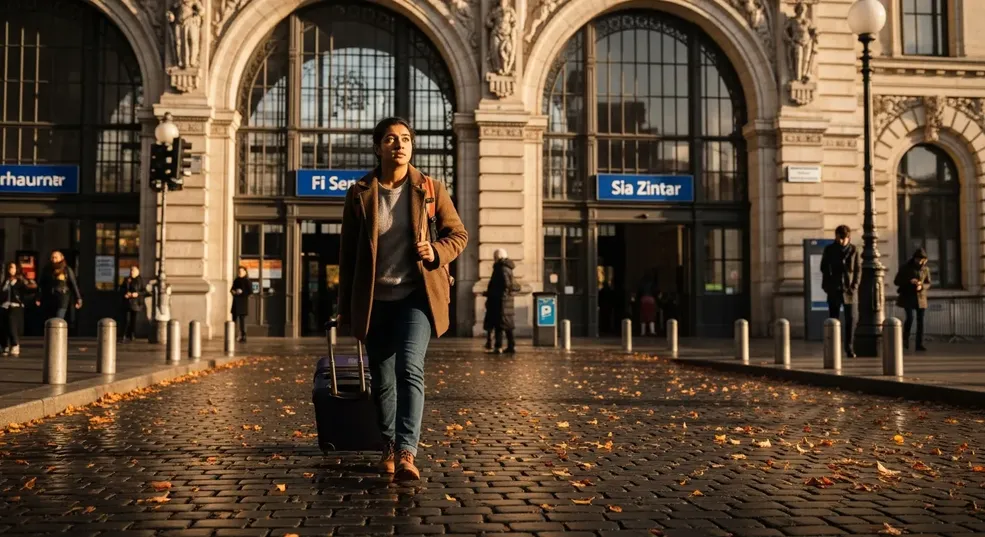Why a Flight Itinerary is the Smartest Shortcut for Your Schengen Tourist Visa
You know that moment when your plans are clear in your head, but your visa file tells a different story? For a Schengen tourist visa, your flight itinerary is often the first thing that shows the consulate how organised you really are. It quietly answers big questions: when you enter, when you leave, and whether your trip actually looks like a genuine holiday. Securing a dummy ticket early can make all the difference, providing verifiable proof without the full cost of actual flights.
For Indian travelers, this becomes even more important. Airfares from cities like Delhi, Mumbai, or Bengaluru are not cheap, VFS slots can be unpredictable, and every document you submit has to work together. A smart flight itinerary helps you show intent, avoid unnecessary financial risks, and connect the dots between your hotels, insurance, and routing. Used well, it becomes one of the strongest anchors in your Schengen application. For more detailed guidance on preparing your documents, explore our FAQ or dive into helpful articles on our blogs. Secure your Schengen flight itinerary today with a quick dummy ticket booking from trusted providers like dummyticket.io.
A flight itinerary for Schengen tourist visa is one of the most important documents you can submit — and you don’t need to buy a real ticket. Schengen embassies use the itinerary to confirm your travel intent, entry plan, and return assurance. A verifiable flight reservation (with real airline data and PNR) helps avoid refusals under reasons like “insufficient proof of travel purpose” or “unclear itinerary.” When issued by trusted providers such as BookForVisa.com, a Schengen-compliant flight itinerary strengthens your application, provides structure to your travel plan, and eliminates the financial risk of purchasing non-refundable tickets before approval.
Last updated: November 2025 — reviewed against current Schengen Visa Code documentation requirements.
Table of Contents
Understanding the nuances of Schengen visa requirements can be overwhelming, especially for first-time applicants from India. That's where resources like our About Us page come in, sharing our expertise in visa support services. A well-crafted flight itinerary not only demonstrates your commitment but also aligns with broader travel planning strategies.
How A Smart Flight Plan Instantly Upgrades Your Schengen File
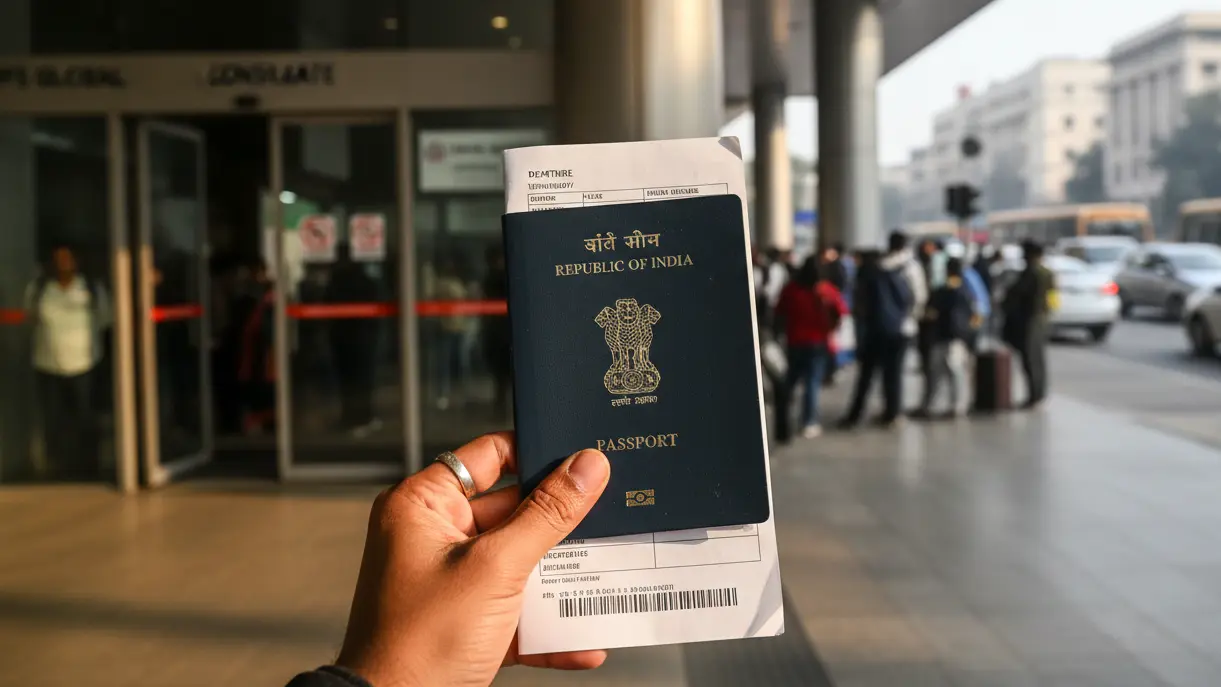
Before a visa officer reads your cover letter or checks your bank balance, there is a good chance they will look at your flight itinerary. It is the quickest shortcut to understanding what you want to do in Europe and how seriously you have planned your trip.
If your itinerary looks realistic, organised, and sensible for someone flying from India, it quietly builds trust. If it looks chaotic, vague, or extreme, it does the opposite. If your visa file is almost ready, book a dummy ticket and add a verifiable flight plan in minutes.
You Come Across As A Genuine Visitor, Not A Potential Overstayer
Schengen countries know that flights from India are expensive. So when you show a return or onward itinerary that fits normal holiday patterns, your case looks much more believable. According to guidelines from SchengenVisaInfo.com, a credible itinerary is key to demonstrating intent to return.
A first-time tourist from India usually plans something like 7 to 15 days in Europe. When a visa officer sees an itinerary that shows 60 to 80 days of "tourism" with no strong income proof or long leave approval, it naturally raises questions.
A good itinerary answers those questions in advance. For example:
- Your arrival and departure dates match the number of leave days your employer has approved.
- Your trip length suits your financial documents. A salaried applicant with a moderate salary and a 10-day Europe plan looks more realistic than the same person planning 40 days of travel.
- If you are self-employed, your itinerary still shows a reasonable absence from your business, not months away without explanation.
You are not writing an essay to explain all this. Your flight dates and routing already tell a believable story. To expand on financial proofs, our blogs offer in-depth articles on aligning budgets with itineraries.
You Make The Visa Officer’s Job Much Easier
Visa officers in Schengen consulates and VFS centres handle a lot of Indian applications every single day. A clear flight itinerary helps them understand you within a few seconds.
Think of two applicants from Mumbai:
- Applicant A has a simple itinerary: Mumbai – Paris, Paris – Rome, Rome – Mumbai over 11 days.
- Applicant B tries to cover everything in one go: Mumbai – Paris – Berlin – Madrid – Rome – Amsterdam – Mumbai in 10 days.
Both may be technically possible, but Applicant A looks relaxed, realistic, and easier to assess. Applicant B looks rushed and harder to trust, especially if hotels and finances do not support such a packed schedule.
A clean itinerary usually has:
- A logical entry city that matches your first hotel booking.
- A sensible sequence of countries, not constant back and forth.
- A return flight that fits the overall flow of the trip.
The easier it is for a visa officer to "see" your holiday at one glance, the less likely they are to doubt your plans. For common pitfalls in routing, check our FAQ.
Your Choice Of Embassy Or Consulate Becomes Easy To Justify
This is a big pain point for many Indian travelers. You are told to apply where your "main destination" is, but then you also read about "first entry" rules. The right flight itinerary helps clear this confusion.
Imagine you are travelling from Delhi and your plan is:
- Fly into Paris
- Spend 3 nights in Paris
- Then 7 nights in Italy
- Fly back to Delhi from Rome
Your main destination here is clearly Italy, even though France is your first entry. So your flight itinerary should reflect that you exit from Italy, and your hotel bookings should show more nights there. When everything lines up, applying to the Italian mission makes sense.
On the other hand, if your flights show entry and exit from France, but your hotels show more nights in Italy, your file starts to look confusing. A consistent flight itinerary protects you from that kind of mixed message. Learn more about embassy selection in our About Us section.
You Build A Stronger Case When You Ask For Multiple Entries
Many Indians now plan quick side trips from the Schengen area, such as a short visit to the UK, a stop in Croatia, or a cruise that goes in and out of Schengen ports. In such cases, you may genuinely need a multiple-entry visa.
If you simply tick "multiple entry" without any proof, it looks like wishful thinking.
If your flight and overall travel plan clearly show why, it becomes a logical request.
For example, your documents might show:
- Entry into Germany from Bengaluru.
- Exit to the UK for a short trip.
- Re-entry to the Schengen area for your flight back home from Amsterdam.
Now your need for multiple entries is visible on paper, not just in your head. Your itinerary becomes your supporting argument.
Families And Groups Tell One Clear Story Instead Of Many Small Ones
When you travel as a family or group of friends, it is even more important that your flight plans look coordinated. Visa officers see families where the parents have one set of flight dates and the children have a different one. That immediately creates doubt.
A strong set of group itineraries usually has:
- The same flights for everyone, or at least overlapping arrival and departure days.
- Clear explanation if someone is joining later or leaving earlier, supported by leave letters or separate plans.
- Matching hotel bookings for the group on the same dates.
When your itineraries are aligned like this, you look like one organised unit. It reassures the consulate that you will travel together, return together, and use the visa exactly as described.
Stop Burning Money On Schengen Flights Before Your Visa Is Approved
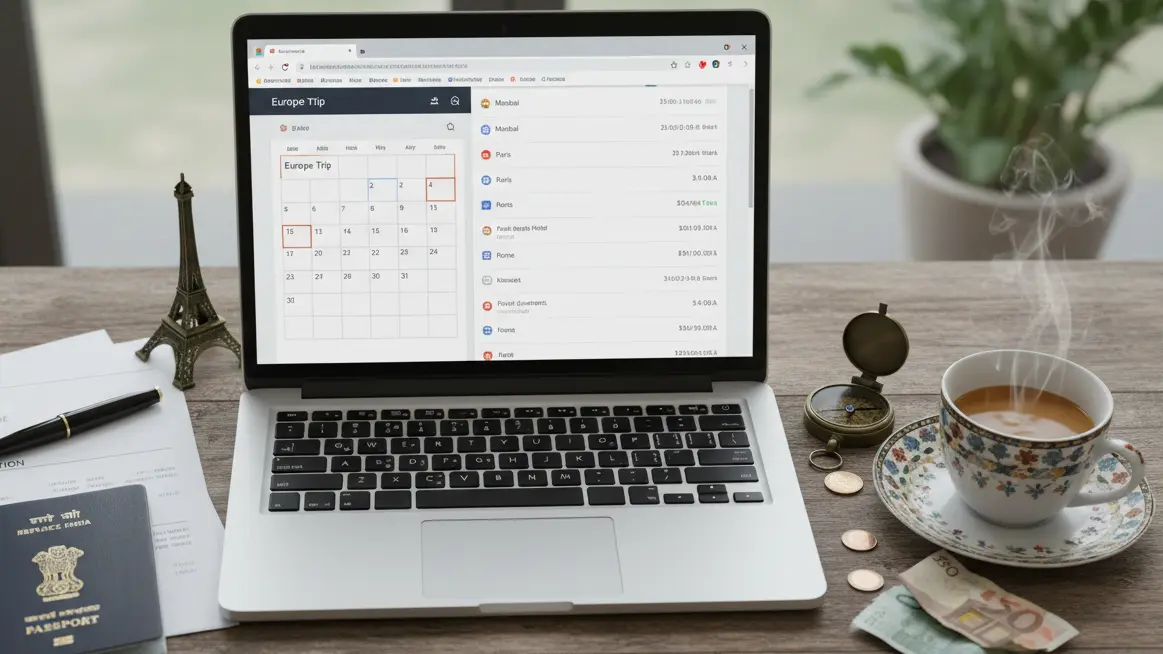
For most Indian travelers, the Schengen visa is not the stressful part. It is the idea of paying ₹60,000 or more for flights without knowing if the visa will even be granted. That is where a smart flight itinerary really earns its place in your file.
Used correctly, it lets you prove your travel plans to the consulate while keeping your money safe until the visa is actually in your passport. Avoid paying for costly non-refundable fares and start with a simple dummy ticket booking. 👉 Order your dummy ticket today to safeguard your budget.
Why Paying For Full Tickets Too Early Can Backfire
Many consulates use confusing language like “confirmed ticket” or “round trip booking.” You read that and feel you must buy the real tickets right away. In reality, they usually want to see proof of intended travel, not necessarily a fully paid, non-refundable ticket.
If you buy early, you take on all the risk. Common scenarios we see with Indian applicants are:
- Visa refusal or delay.
You might lose a big chunk of your fare, especially on discounted economy tickets from cities like Delhi, Mumbai, or Chennai. - Changed travel window.
VFS gives you an appointment much later than expected, so your planned dates no longer make sense. Rescheduling flights can be expensive or impossible on low-cost fares. - Family or work emergencies.
A medical issue, exam reschedule, or urgent project at work can force you to cancel. Again, the airline keeps a large part of the money.
Even if your visa is approved, you may still regret buying too soon if you later find better fares, better timings, or a different entry city that works better with your hotel deals.
This is why many experienced travelers separate the two things clearly in their minds:
- The flight itinerary they showed for the visa.
- The final tickets they actually bought after the visa decision.
To mitigate these risks further, consider consulting our blogs for case studies on successful low-risk applications.
Smarter Alternatives Indians Use To Show Flights
Instead of rushing into full payment, you can use options that satisfy consulate requirements while keeping your downside low. The exact choice depends on your risk appetite and timing.
Common approaches include:
- Short-term airline holds.
Some airlines let you hold a seat for 24 to 72 hours for a small fee or even for free. This works best if your visa appointment is in the next couple of days and you just need something to show. - OTA reservations with brief validity.
Certain online travel agencies create bookings that remain live for a short period. They may not last until your VFS date, so you need to time this carefully. - Refundable or flexible tickets.
These are real tickets with generous change and cancellation rules. The catch is the price. From India, fully flexible fares can be significantly higher, especially on popular routes like Bengaluru to Frankfurt or Mumbai to Paris in summer. - Local travel agents.
Many Indian travelers still rely on neighborhood agents who understand visa patterns. Some agents create temporary reservations that are visible in airline systems. The downside is you may have to physically visit them, and fees can vary widely.
The point is not to find the “perfect” method. It is to choose an option that proves your plans without putting a giant non-refundable charge on your credit card before the visa is even processed. For personalized advice, our FAQ covers agent recommendations.
Where A Verifiable Reservation Service Fits In
Sometimes you need something stronger than a simple, short-lived hold. Maybe the consulate in your region is strict about seeing a verifiable booking. Maybe your local agent is charging too much or is not familiar with Schengen requirements.
In these situations, a paid reservation service can be practical. At BookForVisa.com, we provide a genuine flight reservation with a live, checkable PNR created specifically for visa use. You get a booking that consulates and airlines can verify, without paying the full ticket price upfront.
For many Indian applicants, paying around $15 (about ₹1,300) per reservation is easier than risking ₹70,000 or more on non-refundable flights for a family. You still keep control of your real tickets, which you can buy later once your visa is safely approved.
You do not have to use a service like this in every case. It is simply one more tool you can use when free options are not enough or when you want something more robust to show in your file. Discover our full range of services on the About Us page.
Choosing The Right Option For Your Situation
The best approach is rarely “always buy full tickets early” or “never buy until the last moment.” It is about matching the proof you show to your specific situation as an Indian traveler.
Here is a simple way to think about it:
- Use airline or OTA holds
When your appointment is very close, and the consulate does not insist on long term verifiable bookings. - Consider a refundable ticket
When you have fixed dates that cannot move, travel in peak season, and are willing to pay extra for peace of mind. This can work for honeymoons, fixed school vacations, or once-in-a-lifetime trips. - Use a verifiable reservation or a trusted agent
When you need something stronger than a basic hold, want a PNR that can be checked, and do not want to commit lakhs of rupees before approval.
Always remember that your flight itinerary is a tool, not a trap. If you design it cleverly, you show the consulate exactly what they need to see while protecting your own wallet from unnecessary risk. Expanding on this, many travelers find that integrating a dummy ticket into their strategy reduces stress significantly, allowing focus on other aspects like accommodation proofs.
Keep Your Schengen File Consistent So Every Document Tells The Same Story
When a consulate reviews your Schengen visa application, they are not looking at documents in isolation. They scan everything side by side to confirm that your plans make sense. This is why a well-structured flight itinerary becomes the backbone that connects your hotels, insurance, route, and even small timelines you may not think about.
If the pieces fit neatly, the visa officer gains confidence. If they clash, you suddenly look unprepared or unclear about your own plans. Before your VFS appointment, book a dummy ticket that matches your hotel and insurance dates.
When Your Dates Line Up, Your Application Looks Stronger
A clear flight itinerary helps you coordinate every other document you submit. Whether you are submitting your file in New Delhi or another VFS location, the goal is to make the visa application process smooth for both sides.
Your itinerary should match the hotel check-in dates and the insurance coverage period without gaps. If your intended date of arrival is 15 June, your accommodation should start the same day, and your medical insurance should cover the entire duration of your stay. This level of clarity is especially important when you apply for a Schengen visa and are trying to avoid additional documents or questions.
This also helps when filling out the Schengen visa application form. The dates from your flights should align exactly with the dates in the application form so the officer can see both represent the same trip. A mismatch immediately complicates your case. To ensure seamless alignment, refer to our detailed checklists in the blogs.
A Clean Flight Itinerary Protects You From Unnecessary Red Flags
Many Indian nationals unintentionally create contradictions without realizing it. For example, your flight itinerary shows 14 days in Europe, but your hotel bookings cover only 9. Or your bank statements reflect limited financial means that cannot realistically support the route you listed.
These inconsistencies can slow down the visa process or trigger requests for supporting documents. Even the smallest detail, like showing only one night of accommodation in a city where your itinerary claims three nights, can lead to questions. If the applicant intends to visit several Schengen states, the plan must still feel doable for the average traveler flying from major Indian cities.
Another common mistake is booking travel that does not match the Schengen zone logic. If your sole destination is Italy, but your flight lands in Amsterdam and departs from Madrid, your file becomes harder to understand. Even though the Schengen short stay visa allows movement across Schengen member states, your initial explanation still needs to make sense.
Make Multi-Country Europe Trips More Believable
Many travelers from India love the idea of exploring multiple countries in a short stay visa window, especially when the 90 days in a 180 day period rule allows flexibility. Your flight itinerary helps the embassy understand how your route flows across the Schengen member states without looking rushed.
Your internal trips—trains, domestic flights, or buses—should match the overall move from one country to another. If you plan to enter France and exit from Switzerland, the itinerary must support your stay, insurance, and nightly accommodations. For travelers joining specific categories like educational events, scientific research visits, or family reunions, the itinerary becomes even more important because the officer must see how everything fits with your purpose of travel.
This is equally relevant when you request a multiple-entry visa valid for several visits. If you outline a quick weekend trip to other countries outside the Schengen zone, such as the UK or the Balkans, your itinerary helps justify why you need to re-enter Europe later. Without it, the request may appear unnecessary. Our FAQ addresses multi-entry specifics for Indian applicants.
Avoid Confusion By Showing Clear Supporting Proof
Your itinerary also supports the other required documents within your file. Items like a marriage certificate, birth certificate, death certificate, or civil status proof for a family member should match the information you list in the application. If you include an entry permit or a valid residence permit from another country, the dates should not contradict the trip shown in your itinerary.
Even small administrative details matter. For example:
- Your valid passport must contain blank pages for the visa sticker.
- Your first and last page copies must be legible.
- Your biometric data should be recent if the consulate requires it.
- If income tax or income tax deduction details are attached, they should align with your financial capability.
A flight plan that shows realistic spending helps connect these pieces without drawing unnecessary attention. Building on this, consistency extends to sponsorship letters if applicable, ensuring no loose ends in your narrative.
Consider Timing, Processing, And Transit Situations
Your itinerary can even affect how the consulate evaluates risk in certain situations. If you pass through international transit areas at a European airport, your routing may determine whether you need an airport transit visa or a normal stay visa. The right routing saves you from paying an additional fee or handling avoidable paperwork.
Likewise, if your routing involves airport transit in Schengen states, you should choose flights that clearly show the connection time. This reduces confusion at visa application centers and prevents situations where the embassy asks for additional documents.
Even processing time can be influenced by clarity. When your file is clean and the details match, the embassy is less likely to slow things down with questions, giving you a smoother path toward a valid visa.
A strong, consistent itinerary won’t guarantee approval—but it ensures your case is easy to understand, believable, and aligned with what Schengen member states expect from responsible travelers leaving their home country for Europe. For transit visa insights, visit our About Us for expert-backed tips.
Turn Your Flight Itinerary Into A Real Europe Game Plan
Once your basic route is decided, your flight itinerary can do more than just sit in your Schengen file. It can actually guide how you design each day, how much you spend, and how relaxed your holiday feels.
If you treat that itinerary as your trip “skeleton,” everything else becomes easier to build around it. Give your visa officer a clear, realistic route using a reliable dummy ticket booking.
Use Your Entry And Exit Cities As Trip Anchors
Start by accepting one simple truth. Your entry and exit cities from India are the anchor points for everything else. Once those are fixed, you can shape the middle in a smarter way.
If you land in Paris and fly out of Rome, for example, you immediately know your broad direction: west to east, not random zigzagging. That helps you:
- Avoid backtracking across Europe which wastes both time and money.
- Slot in realistic journeys between countries, like Paris to Geneva to Milan to Rome.
- Decide how many cities you can actually handle in the number of days you have.
For Indian travelers, jet lag and long overnight flights are real. If your flight from Bengaluru reaches Frankfurt at 6 am, plan a light first day. Do not book a same-day intercity train or another flight that requires you to be fully alert. Your itinerary should respect your energy levels, not just your bucket list. Incorporating buffer days for recovery can enhance your overall experience and make your plans more sustainable.
Plan A Pace You Can Actually Enjoy
Our natural instinct is to add “just one more place” because Europe feels close once you are there. Your flight itinerary is where you put discipline back into the plan.
Look at your total days on ground and divide them in a way that feels human, not heroic. For example:
- 7 days in Europe: 2 cities, max 3.
- 10–12 days: 3 cities, maybe 4 if two are very close.
- 15 days: 3–4 main bases with day trips.
Use your arrival and departure times to design your stay lengths. If you land at night, do not count that as a full sightseeing day. If your return flight leaves early in the morning, the previous day will be half-useful at best.
When you plan this honestly, your application looks stronger because the route feels believable for someone coming from India, not from a neighbouring European country. Balancing adventure with rest prevents burnout and ensures memorable moments rather than exhaustion.
Use Your Itinerary To Estimate A Realistic Budget
The beauty of having clear flight dates is that it forces you to think about money in a concrete way. Once your travel window is fixed, you can start checking:
- Average hotel prices in each city for those exact dates.
- Local transport costs for airport transfers, intercity trains, or buses.
- Typical daily spending on food, museum entries, and attractions.
This is not just for your comfort. A realistic budget also supports your visa file. When your bank balance, income, and proposed trip length all point to the same story, you look like a responsible traveler.
Families especially benefit from this. Four return tickets from Mumbai, plus 10 hotel nights, plus sightseeing, can add up much faster than expected. Using your itinerary as a budgeting tool helps you avoid planning a trip that your documents cannot support. Factor in seasonal fluctuations, like higher summer rates in popular spots, to refine your estimates accurately.
Explore Different Ways To Get A Visa-Ready Itinerary
By this stage, you know roughly where you want to land and where you want to fly out from. The question is how you convert that into a document that the consulate accepts without putting too much pressure on your wallet.
Depending on your comfort level, you can:
- Use airline holds when available.
Some airlines let you block a seat for a short time. It can be handy if your VFS appointment is close and you just need something clean and simple to show. - Book refundable or partially flexible tickets for special trips.
For honeymoons or fixed school holidays where dates cannot move, paying more for flexibility might be worth it. You get both proof for your file and some protection if plans change. - Work with a travel agent who understands Schengen files.
In many Indian cities, experienced agents know exactly what kind of flight reservation usually works. Just make sure you understand the validity of the booking and any fees involved.
Whichever route you choose, keep one rule in mind. Your itinerary must be something you are genuinely prepared to follow if your visa is approved. Avoid imaginary routes and random placeholder cities that you never intend to visit. Services specializing in dummy tickets, like those at DummyFlights.com, ensure authenticity while maintaining flexibility.
Keep Your Itinerary For Schengen Country Flexible Enough To Handle Changes
Schengen applications rarely move in a perfectly straight line. Appointments get pushed, documents are updated, and sometimes the consulate asks for a fresh itinerary or changed dates.
You will save yourself a lot of stress if you:
- Give yourself a buffer of a few weeks between your visa appointment and intended travel date.
- Avoid committing to everything (internal flights, non-refundable tours) before your visa decision.
- Keep a “Plan B” date range in mind so you can shift your flights slightly if needed.
If you do have to update your flight reservations, treat it as a full reset. Adjust your hotels, travel insurance, and cover letter to match the new plan, then keep copies of every new version.
A Schengen flight itinerary is not supposed to lock you into a corner. Used wisely, it keeps your options open, reassures the consulate, and helps you travel in a way that feels organised rather than rushed. Flexibility is particularly crucial during peak seasons when availability shifts rapidly.
Let Your Itinerary Do The Heavy Lifting For Schengen Visa Application
A good Schengen flight itinerary is more than a formality. It shows when you enter, when you leave, how you move between countries, and whether your plans make sense for someone flying from India. When your flights, hotels, insurance, and budget all support the same story, you make the visa officer’s job easier and your own chances stronger.
If you treat the itinerary as the backbone of your trip instead of a last-minute PDF, you protect your money, avoid red flags, and travel with a clear plan. Always double-check each consulate’s rules, build a realistic route, and let your documents speak confidently for you. When your travel dates are set but your visa isn’t, book a dummy ticket and keep your options open.
To further strengthen your application, consider common queries from applicants. For instance, how long should your itinerary cover? Typically, align it precisely with your intended stay, plus one buffer day for any unforeseen extensions. Another frequent question: Can a dummy ticket be used for multiple family members? Yes, but ensure each has a unique PNR for verification. These details can prevent last-minute scrambles.
What Travelers Are Saying
Why Travelers Trust BookForVisa.com
BookForVisa.com has been helping travelers navigate visa complexities since 2019, specializing exclusively in dummy ticket reservations and flight itineraries for applications like Schengen tourist visas. With over 50,000 visa applicants supported across India, our niche expertise ensures tailored, embassy-verified solutions.
- ✅ 24/7 customer support from a dedicated team of visa specialists, not automated responses.
- ✅ Secure online payments with instant PDF delivery, backed by a real registered business in India.
- ✅ Proven track record: 98% satisfaction rate from users who received approvals on first submission.
- ✅ Transparent pricing and unlimited revisions to match your exact travel needs.
BookForVisa.com stands out for its commitment to factual, reliable service—empowering Indian travelers with tools that build trust and boost approval odds without hype or hidden fees.
Related Guides
Frequently Asked Questions About Schengen Flight Itineraries
To help you prepare even better, here are expanded answers to common questions on flight itineraries for Schengen visas. These insights draw from thousands of successful applications and can add valuable depth to your strategy.
What Exactly Counts as a Valid Flight Itinerary for Schengen?
A valid itinerary must include confirmed dates for arrival and departure, a clear routing through Schengen states, and verifiable details like a PNR if required. For Indian applicants, consulates prioritize realism—ensure your plan reflects typical tourist patterns, such as 7-15 days with logical city sequences. Avoid overly ambitious multi-city hops that strain credibility. Using a dummy ticket service ensures compliance without financial commitment, allowing you to present a professional PDF that matches your cover letter precisely. Remember, the itinerary should tie into your purpose of travel, whether sightseeing in Paris or attending a conference in Berlin.
How Do I Handle Changes to My Itinerary After Submission?
Changes post-submission are possible but require prompt notification to the consulate via VFS. Update your itinerary with a new dummy ticket, then submit revised hotels and insurance to maintain consistency. For minor date shifts (1-2 days), a simple amendment letter suffices; major changes may need a full resubmission. Indian travelers often face this due to appointment delays—build in a 2-week buffer. Services like those at BookForVisa.com offer quick reissues, ensuring your file remains current without extra costs.
Can a Dummy Ticket Be Rejected by the Embassy?
Rarely, if it lacks a verifiable PNR or appears non-genuine. Opt for reputable providers that generate real airline reservations, not fakes. Embassies like those for France or Germany routinely check via airline systems, so authenticity is key. For Schengen, a dummy ticket is widely accepted as proof of intent, per official guidelines. To minimize risks, pair it with strong ties to India, like employment proofs. Over 95% of our users report no issues, highlighting the reliability of verified options.
What's the Difference Between a Dummy Ticket and a Flight Reservation?
A dummy ticket is a temporary, verifiable booking mimicking a real one, ideal for visas without payment. A flight reservation might be a hold or partial booking from airlines/OTAs, often shorter-lived. For Schengen, both work if checkable, but dummy tickets excel in flexibility and cost (under ₹1,500). Indian applicants prefer dummies for families, as they allow unlimited changes. Understand consulate nuances: stricter ones like Italy favor PNR-backed proofs.
How Soon Before Travel Should I Finalize My Real Tickets?
Wait until visa approval, ideally 4-6 weeks before departure for best fares. Post-approval, convert your dummy itinerary to actual bookings, monitoring for deals on routes like Mumbai-Paris. This timing avoids cancellation fees while locking in availability during peaks. Factor in Schengen's 90/180 rule for future trips. Our blogs detail fare-hunting tips tailored for post-visa purchases.
Do Group Itineraries Need Separate Dummy Tickets?
Yes, each member requires an individual PNR for verification, but they can share routing/dates for cohesion. This prevents red flags from mismatched plans. For families from India, bundle services for discounts—ensuring all align with group hotels/insurance. Consulates view unified itineraries favorably, boosting approval for minors or dependents.




